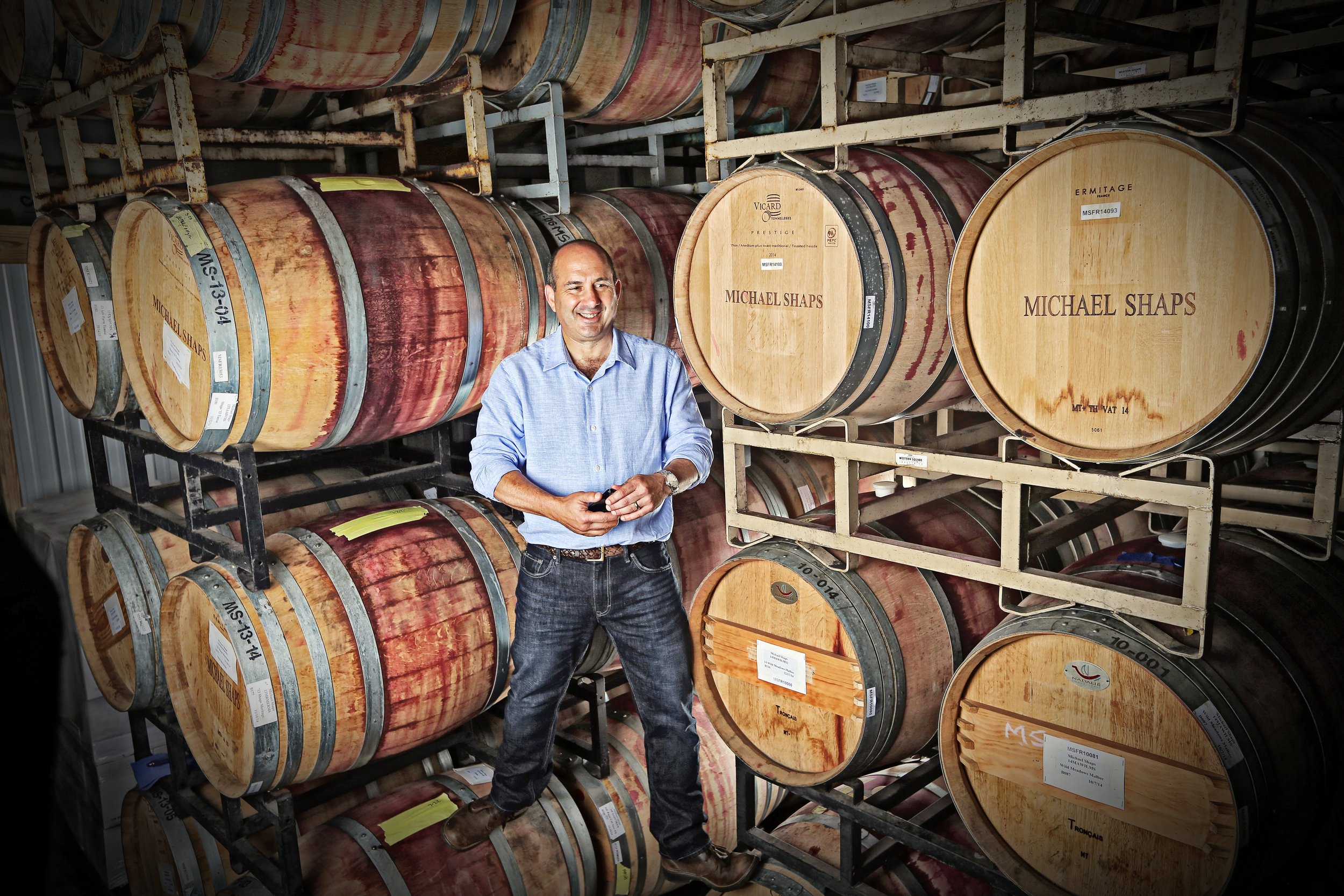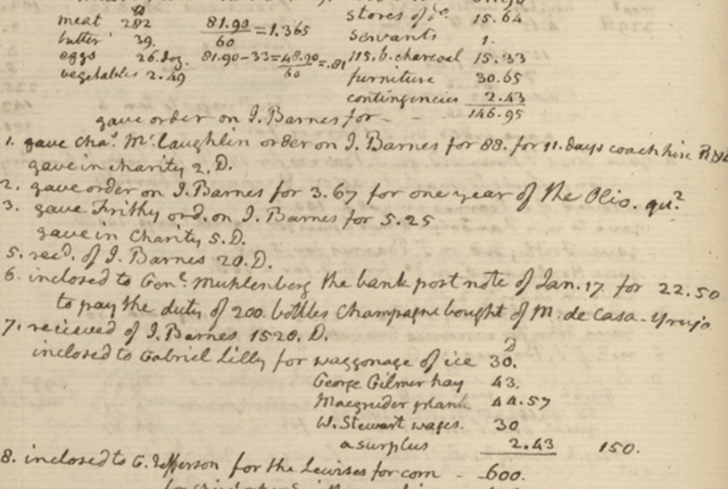Vine Path Blog 2/22: Virginia and the Wines of Michael Shaps
Did you know that the oldest American wine region is Virginia? In 1773, under the sponsorship of Thomas Jefferson’s friend Thomas Adams, the Tuscan viticulturist Filippo Mazzei traveled to Virginia on a boat full of European grape vines. He was convinced by Benjamin Franklin that it was possible to produce exceptional wines in the Americas, if only one was willing to take the risk and take the plunge. Upon Filippo’s arrival he declared, “In my opinion, when the country is populated in proportion to its extent, the best wine in the world will be made here…” A lofty prediction indeed! Virginia however, like so many other emergent wine regions in the US, would later see their hopes dashed, and their progress undone, by the passing of Prohibition in 1919.
Portrait of Filippo Mazzei
Filippo Mazzei is a fascinating figure in American history and the history of wine in the world. Though he was born into an aristocratic Tuscan family, Mazzei regarded himself as a ‘Citizen of the World’ and a staunch believer in the promise of the American Democratic movement. He would go on to befriend nearly every major American figure behind the Revolution and would inevitably enlist as a soldier on the American side of the Revolutionary war as well as acting as a clandestine arms dealer for the Revolution, helping traffic weapons into Virginia. His influence on Jefferson is of unique importance, as it’s most likely that Jefferson’s famous line, “All men are created equal”, was paraphrased from the writings of Filippo Mazzei!
Mazzei’s viticultural project in Virginia would come to an abrupt and disappointing end. In 1778 Filippo traveled back to Tuscany with Thomas Jefferson on a fundraising mission for the Revolution, entrusting his estate to the General Baron von Riedesel who, in an act of extreme disrespect to their host, left the vineyard trampled by the hooves of his soldier’s horses. This was the end of Mazzei’s experiment, and the end of the American viticultural project in general. The Mazzei family remains to this day a major player in Tuscan wine, now owning several estates all dedicated to strict organic practices. In honor of the legacy of Filippo, the Mazzei’s produce a highly regarded Cabernet bottling named ‘Philip’, sourced from an old vineyard in Chianti Classico.
The Shenandoah Vineyard in Virginia, part of the Michael Shap’s estate.
Flash forward to today, Virginia wine is still struggling to establish its reputation, however there are a few winemakers making a strong case. Among them is the winemaker and importer Michael Shaps. Michael is an extraordinarily unique winemaker. Confoundingly, he spends half of his time in Burgundy producing wines for his ‘Maison’ line and the other half in Virginia producing wines from local vineyards, all the while contracting out his winemaking services to growers and producers from Tennessee to Delaware. Indeed, it’s hard to find a winemaker that juggles this much while sustaining the kind of quality level that he does.
Our first experience with these wines was truly eye opening. While we’re true believers in the potential for wines in the US outside of the Pacific coast, we admit that great wines from elsewhere are still few and far between. Shap’s wines were a revelation and, we think, a massive step forward for the wines of Virginia. We’re thrilled to get to showcase this trailblazing wines.
Michael Shaps Wild Meadow Vineyard Chardonnay
Since Michael is a working winemaker in Burgundy, his understanding of great Chardonnay is acute. He brings this expertise to bear on this single parcel bottling of Virginian Chardonnay. The style here is distinctly French, evoking thoughts of Meursault rather than the Russian River Valley. A massive oak profile is not to be found here, nor is the characteristic high-alcohol and sugar of many Californian examples. Instead, this bottle focuses on minerality, freshness, and acidity.
A page from Thomas Jefferson’s wine notes documenting a purchase of 200 bottles of Champagne for his collection.
Michael Shaps Monticello Petit Manseng
Yes, that Monticello! This Petit Manseng, along with the Cabernet Franc and the Petit Verdot, is sourced from the Virginian DO, and original American wine region Monticello. While Jefferson’s personal experiment on his estate was an abject failure, greater viticultural minds have been able to succeed where he failed. In my mind, this is the best of the four bottlings. Petit Manseng is a grape from Southwest France that’s principle for the wines of Jurancon and the Brandies of Armagnac, though virtually non-existent anywhere else. In Virginia it appears to have found a comfortable new home. This wine is brisk and elegantly balanced with just the right touch of oak. Bursting with tart apple and citrus and rounded out with delightful vegetal and mineral notes, this wine is a remarkable achievement for the state.
Michael Shaps Monticello Cabernet Franc
If you know us at all you know that we’re kind of obsessed with Cabernet Franc. It’s Cabernet Sauvignon’s parent grape, it’s one of the most divergently expressive varietals out there, and it’s spectacularly diverse in it’s culinary application. Virginia represents a new frontier for this under-rated grape, and this bottling makes a great case for the state’s legitimate claim to quality. This example evokes Bordeaux over the Loire, opting for a meaty and smoky profile that is more reminiscent of Saint-Emilion than anything else. The uniquely Virginian feature of this Franc is it’s heavy vegetal inflection.
Michael Shaps Monticello Petit Verdot
Petit Verdot is the most mysterious of the Bordeaux varietals and is rarely used to produce mono-varietal wines. Typically the grape is applied to a blend to contribute structure, tannins and acidity, along with leathery and smoky undertones. One reason it’s rare to see by itself is that it’s often just too intense to be drinkable alone. On rare occasions one might find a mono-varietal bottling like this but those occasions are truly, extremely rare. We may not have occasion to say this often, but Petit Verdot is a grape of great potential and we hope that in the future more winemakers will put the effort into it. Of Michael’s reds, this is my favorite. It’s a perfectly balanced wine that carries it’s massive tannins and high-alcohol with a grace that’s difficult to achieve in the winery. Dank, mouth-filling, spicy and chewy, this wine has no chill. Along with the Cabernet Franc, this is a wine suited to aging. If you’re able, I’m sure you’d be into a treat when it turns 10!
Michael Shap Wineworks





